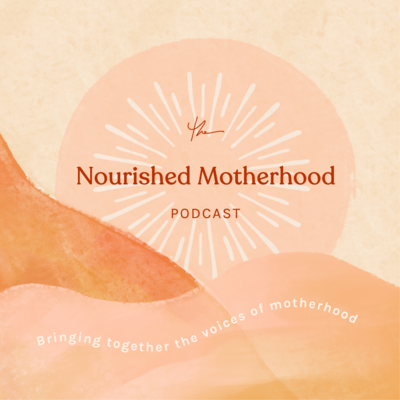November 4, 2021
Expect the Unexpected: What You Need to Know About C-sections & High-Risk Pregnancy


Facing the unexpected in your pregnancy or birth can lead to a lot of fear and anxiety for a mama. And when mom is swimming in all those negative emotions, it’s a lot harder to be in tune with the needs of her body and her growing babe.
That’s why for many mamas, having a birth plan can be super empowering. And yet, every mother has to accept that ultimately, we can never control the outcome. As my guest today Dr. Tania Hall says, “the goal is always a healthy mama and a healthy baby or babies. In some cases, high-risk pregnancy or C-section becomes part of the journey to that goal.”
While it may be a personal goal to avoid a C-section or a high-risk pregnancy, understanding what to expect in those situations can make all the difference. In this episode, Dr. Tania Hall is addressing everything you need to know when facing a high-risk pregnancy or C-section. You’ll even learn what questions you can ask and how to find a provider that will truly support your birth goals.
My hope is that being able to process all this information now will empower you, regardless of what road you travel through pregnancy and birth.
Moments You Don’t Want to Miss
[06:08] Listen to Dr. Hall share how she discovered her passion for obstetrics and women’s medicine
[14:27] Standard vs. High-Risk Pregnancy: Discover the differences
[24:24] Learn some of the most common circumstances that may result in a C-section
[44:00] Find out what the recovery process looks like after a C-section
[51:58] Here are Dr. Hall’s tips for finding a provider who will support your birth goals
Signs of a High-Risk Pregnancy
Kelly Jo: I think a lot of us go into pregnancy not even thinking about it potentially becoming high-risk. Can we talk a little bit more about some common situations that make you a candidate for a high-risk pregnancy? What can we look out for?
Dr. Hall: So the way that I think about pregnancy is that the ultimate goal at the end of the road is a healthy mom and a healthy baby or babies - if there's more than one. A high-risk pregnancy happens when there are one or multiple barriers - or potential barriers to achieving that goal. Therefore, prenatal care becomes a dance to try to optimize the best outcomes for both mom and baby if you do have a barrier, like a placenta for example.
If you do have placenta previa, you are actually no longer a candidate for vaginal delivery. You will need to have a C-section. And most of the time, things go fine. Bleeding is a much higher risk for the previa needing a transfusion and medicines to help with all of that. But that's not usually something that a woman would be surprised about. Because ultrasounds are so common now, we often find out a lot of those details as early as 19 or 20 weeks, sometimes earlier. The main thing to look out for there is vaginal bleeding.
And not necessarily first trimester bleeding, because that's very common and most of the time will not be of any consequence. But red vaginal bleeding anytime later in pregnancy needs to be checked on through at least a conversation with your doctor.
Another instance is placental abruption. This is where there's tearing or bruising in the space between the placenta and the uterus. That can be very dangerous for the mom and the baby. And so that's always something that we keep in mind. It's not really common to have that happen out of nowhere or have it happen spontaneously. But I have seen that it tends to happen more commonly with injuries.
Understanding the Process of a C-Section
Kelly Jo: So can you walk us through the whole process of a C-section, from start to finish? What can we expect?
Dr. Hall: Yeah, totally. So we always go over a consent form where we go over the risks, benefits, and alternatives of surgery. We make sure that all of mom and partners’ questions are answered. If a woman's been in labor, and they have an epidural already, sometimes the anesthesia doctor can give a booster dose of medicine and the epidural can then be used for a C-section.
But if this is a birth that’s scheduled at like 39 weeks, then typically they do a type of anesthesia called spinal. It's similar to an epidural in terms of how they put it in. But it's just a dose of medicine that once it's in the needle, it comes out and that's all that stays with the patient.
With an epidural, there's a little tiny plastic catheter that stays in the back so that the mom can continually get doses for the unpredictable duration of labor. With a spinal, the strong numbing usually lasts about two hours. But as you know, most women labor for more than two hours.
So then the mom will sit and tuck their chin down and curl on the table. The anesthesia doctor cleans off their back with some strong soap, and they do some numbing medicine close to the skin. The hope is always that that's actually the worst part of the whole thing because it can be kind of a pinchy feeling. Then they give that a second to kick in.
Once that's working, they give the mom the numbing medicine in the deeper spot. When that's in the right place, a woman's butt and feet start to get warm and tingly. So that means the medicine is in the right place and then they have a lady rest back on the operating table...
Finding the Ideal Provider for You
Kelly Jo: It seems like you really trust mom's intuition in your patients, right? So I would love to hear - what are some things we can do to foster that kind of trust and connection with a potential provider?
Dr. Hall: If you're looking for a provider who has some of those desired qualities, word of mouth is really huge. Nothing speaks a greater compliment than if you have someone whose baby you delivered, and they're like, “Oh, my gosh, I would have 12 babies with that provider!”
I think a person's personality is what it is. And I've met plenty of doctors who are kind of gushy, and they want to just learn all about a person and help them accomplish their healthcare goals. Then there are people who are a little more paternalistic. It’s not necessarily bad. It’s more like this is the way I do things - take it or leave it.
One thing I recommend for patients is to find the phone number for labor and delivery online, call labor and delivery and say, “Hey, I'm 32 weeks pregnant, I'm moving to town. You work with all these providers. Who do you recommend?”. The labor and delivery nurses see how everybody does things. I think they will give candid responses about who to see or who to avoid.
I think doing a little bit of research on the front end before you start building that relationship with someone can save a lot of heartache. Or if you begin that journey, and you're having feelings like, oh, this is not exactly the way that I saw my care unfolding, you need to know it’s okay to make a change. People transfer care all the time.
A Few Closing Thoughts From Our Conversation
Wow, if you were facing a high-risk pregnancy or C-section, wouldn’t you want a provider like Dr. Hall in your corner? I know I would. I loved the way she was able to describe what to expect at every step of the pregnancy or delivery.
It is a huge challenge for us mamas to keep our thought life always focused on the positive. Fear can be such an enemy to the health of you and your baby. But with the wealth of information in this episode, I hope this puts you in a place of feeling empowered. I also hope it allows you to feel more confident to ask questions and advocate for yourself.
I believe that every mom deserves to find a provider that will sit and process through every one of your questions and fears. If they don’t, then I encourage you to keep searching. Like Dr. Hall mentioned, people switch providers all the time.
Getting answers and the reassurance you need allows you to manage those fears, freeing you up to focus on being in tune with your body and that precious baby of yours. In this place, you will always make the best decisions.


Interested in learning some of the simple and holistic ways you can reduce your chances of having a high-risk pregnancy? Discover how in the Nourish to Flourish Course!
This isn’t your average pregnancy course! We dive deep into how your body works, fertility, conception, fueling your body for long-term health, walking through every step of each trimester, and recovering with intention after delivery.
Along the way, you’ll learn valuable knowledge and hear heartfelt stories that will empower you to make confident choices and live with joy.
More From Dr. Tania Hall, OBGYN


Tania loves family, work and play! In her free time you can find her scrambling up peaks after her crazy sons, hobby homesteading, foraging, berry picking, fishing, hunting and enjoying her husband’s amazing cooking and homebrew.
At Alaska Women’s Health, their top priority is empowering women to enjoy individualized care - founded on the best evidence based medicine available and the patients’ priorities.
Links & Resources Mentioned
Rate, Review, & Follow on Apple Podcasts
If you’re loving these conversations, please consider rating and reviewing the podcast! This helps me support more women - just like you - find the grace, encouragement and support they need at every stage of motherhood.
If you have an iPhone, go to iTunes and leave a review!
Not sure how? Check out this video!






